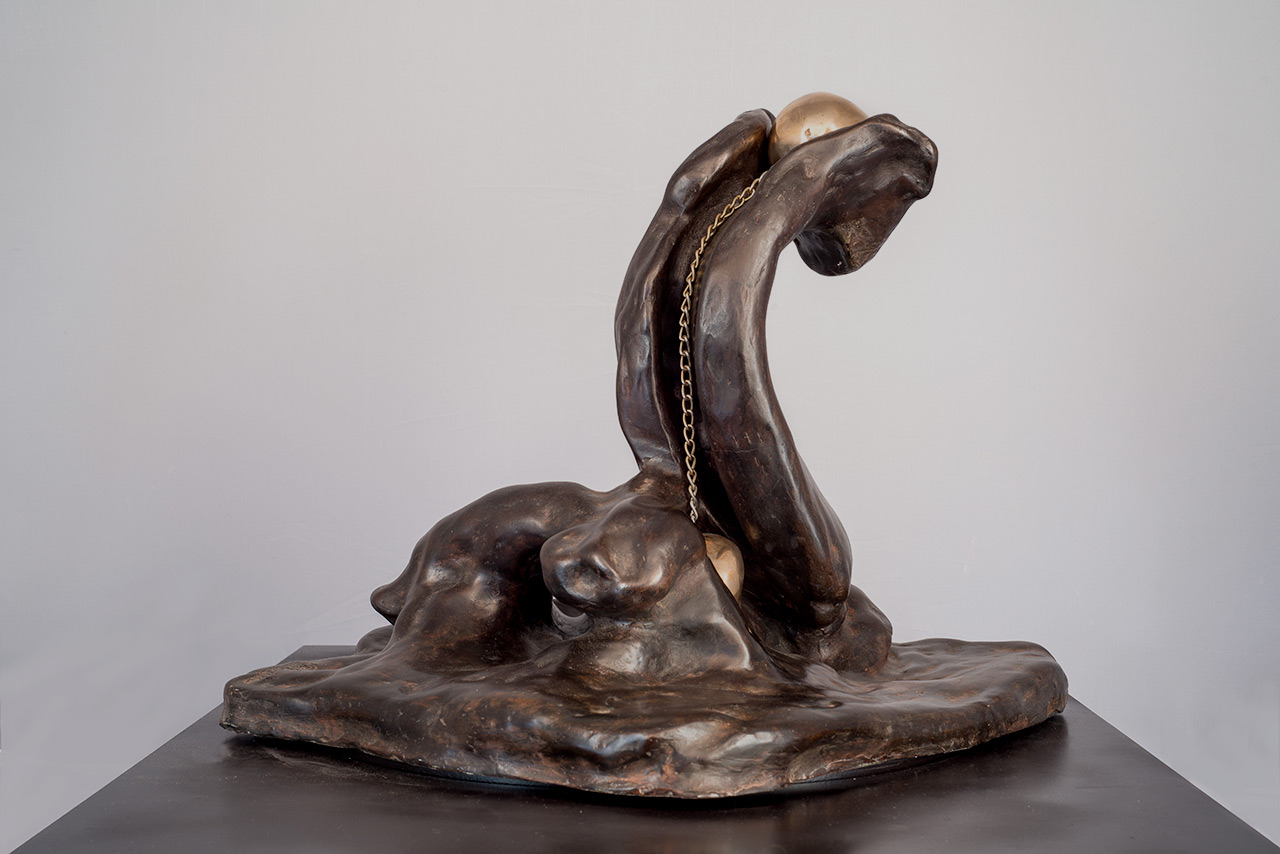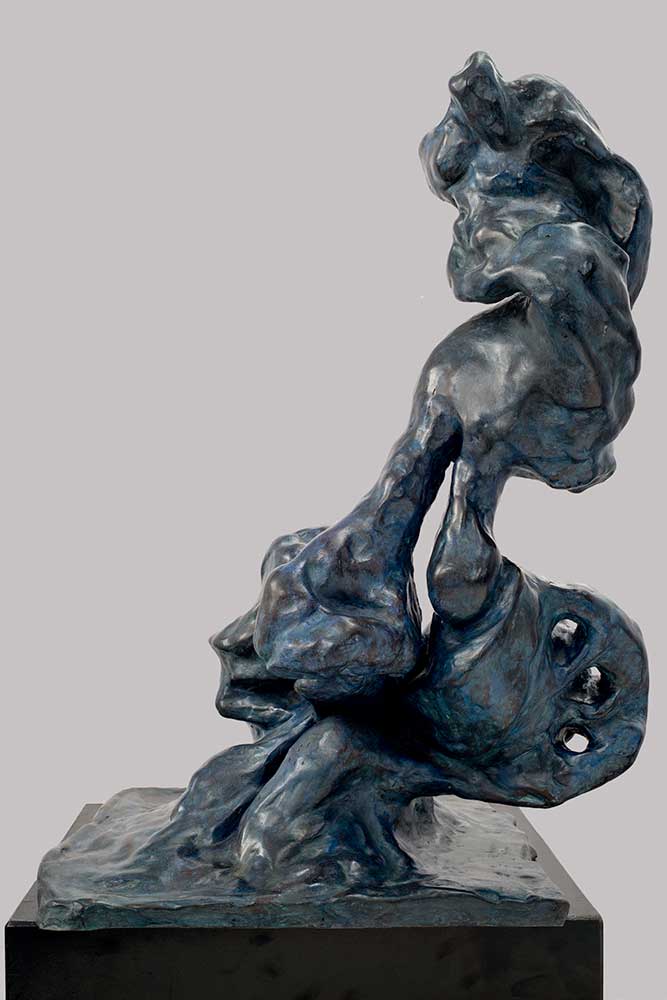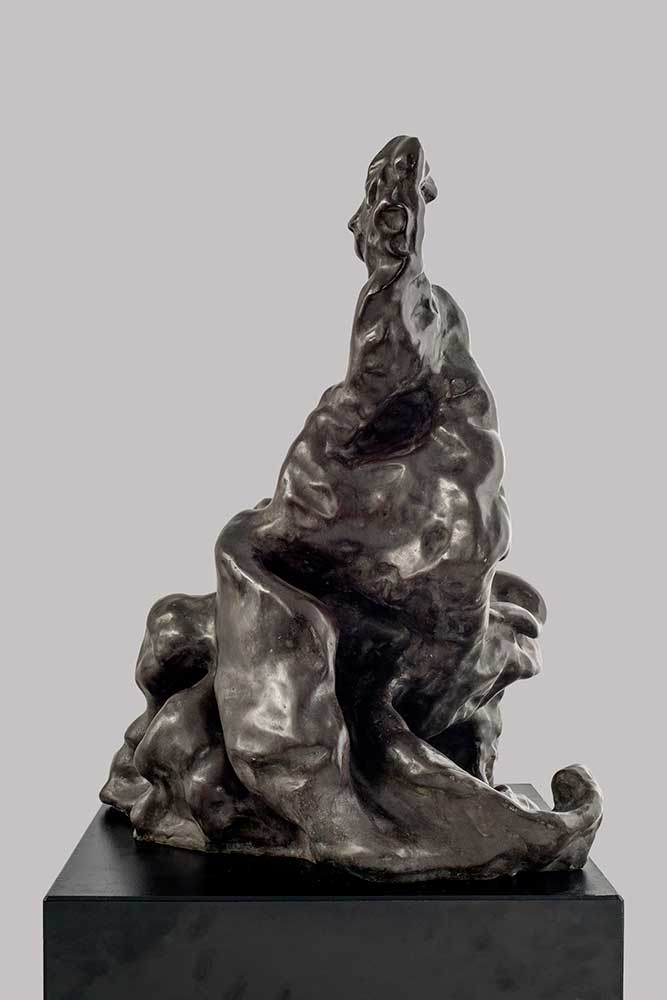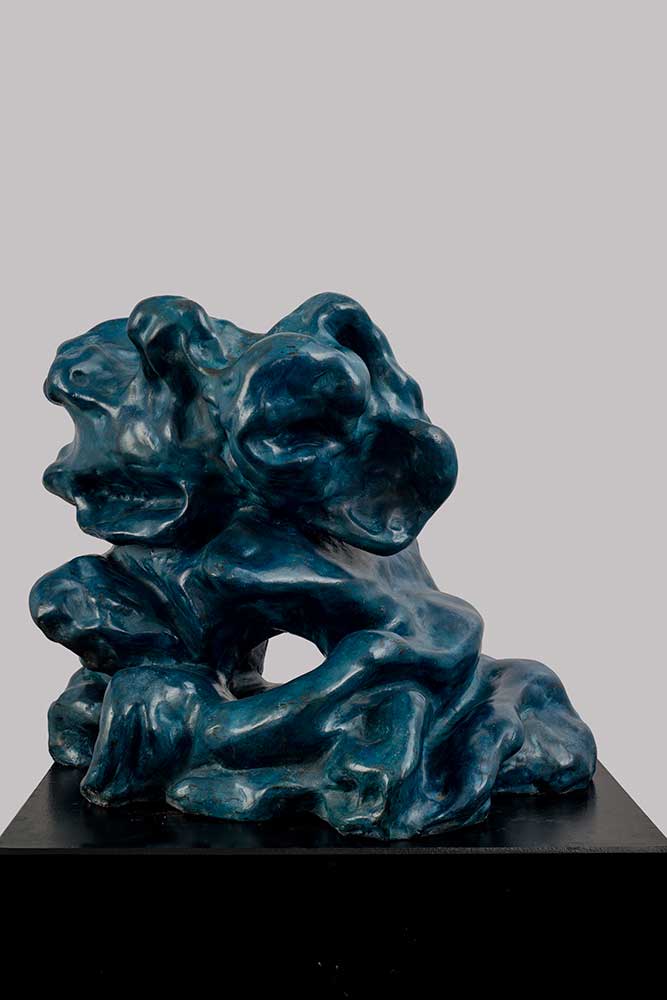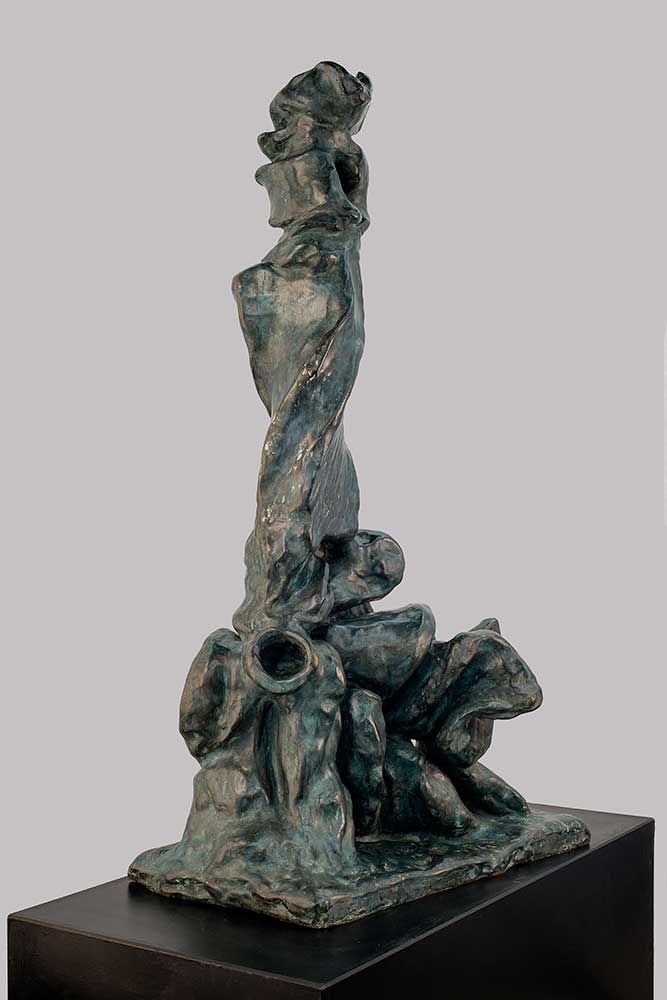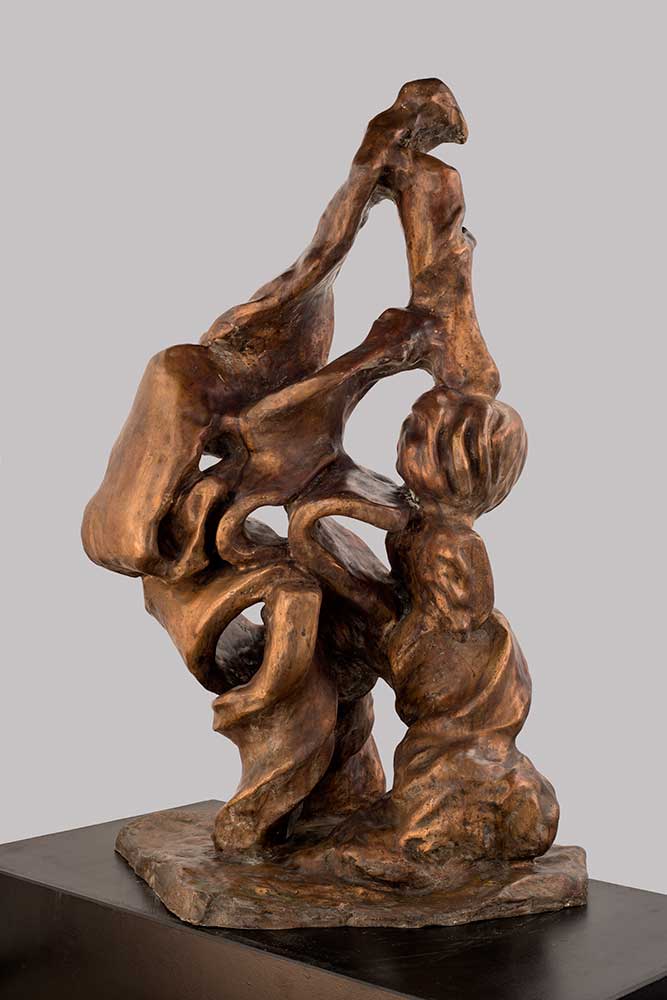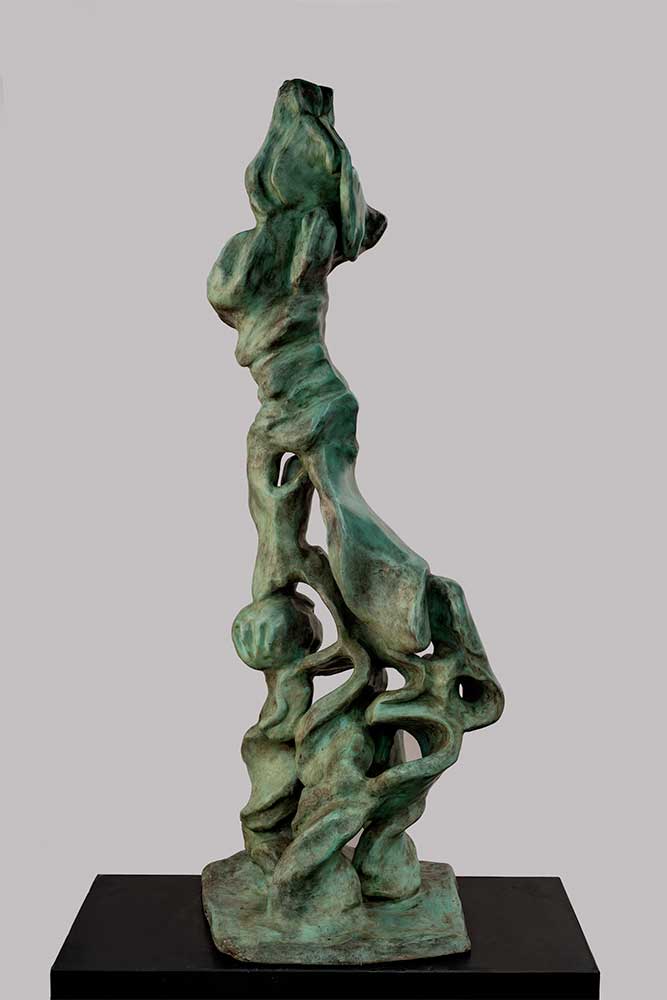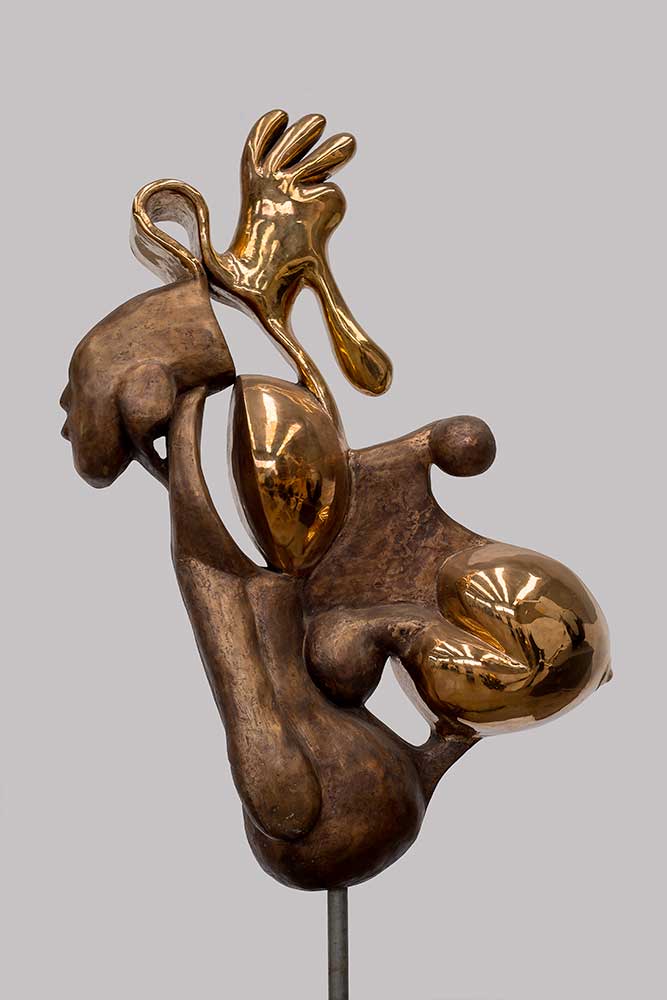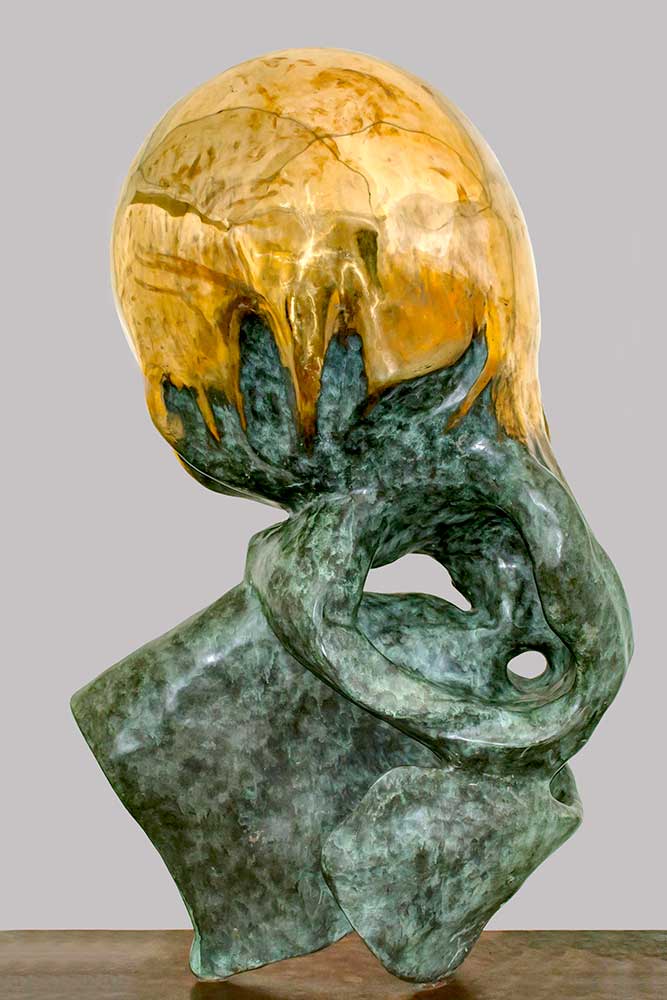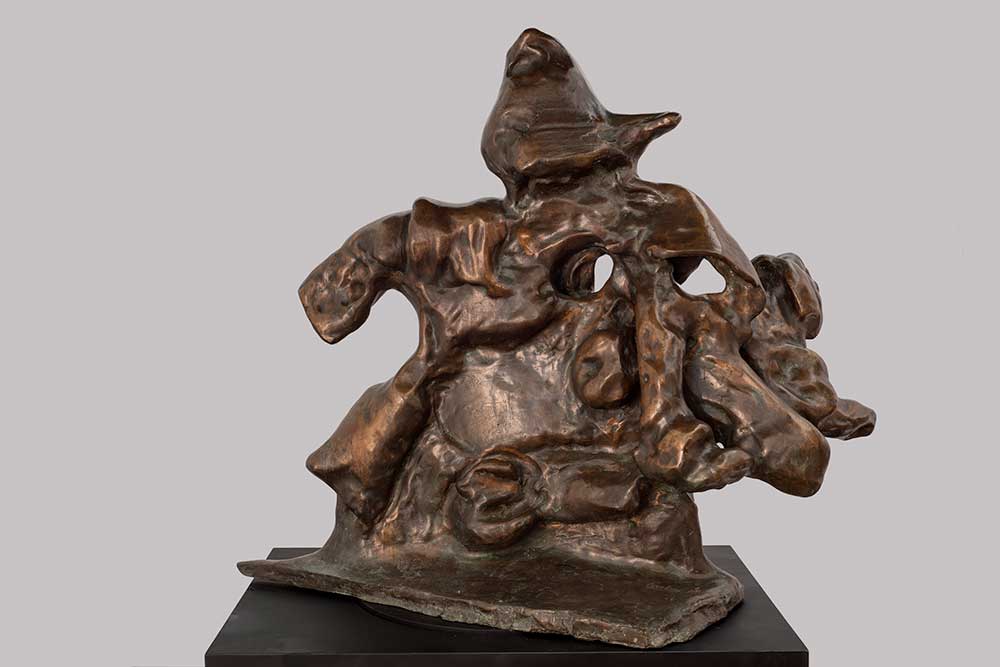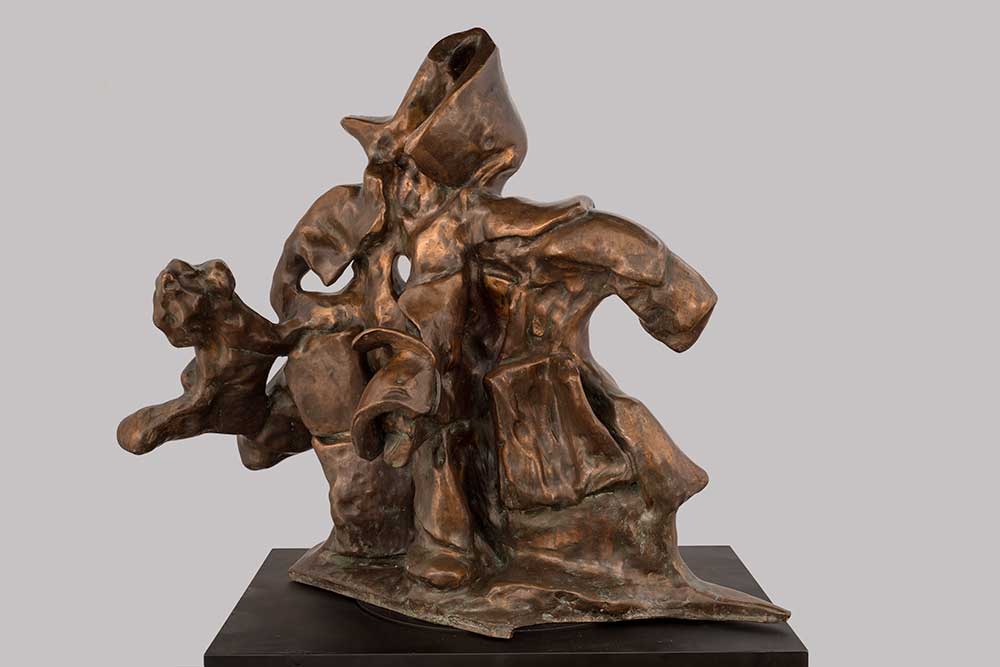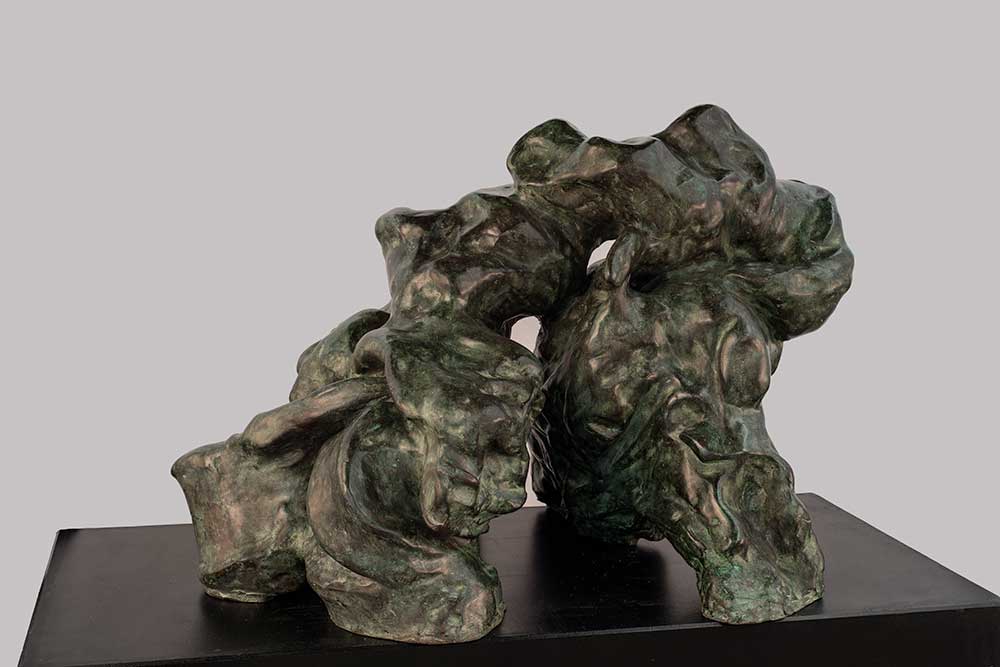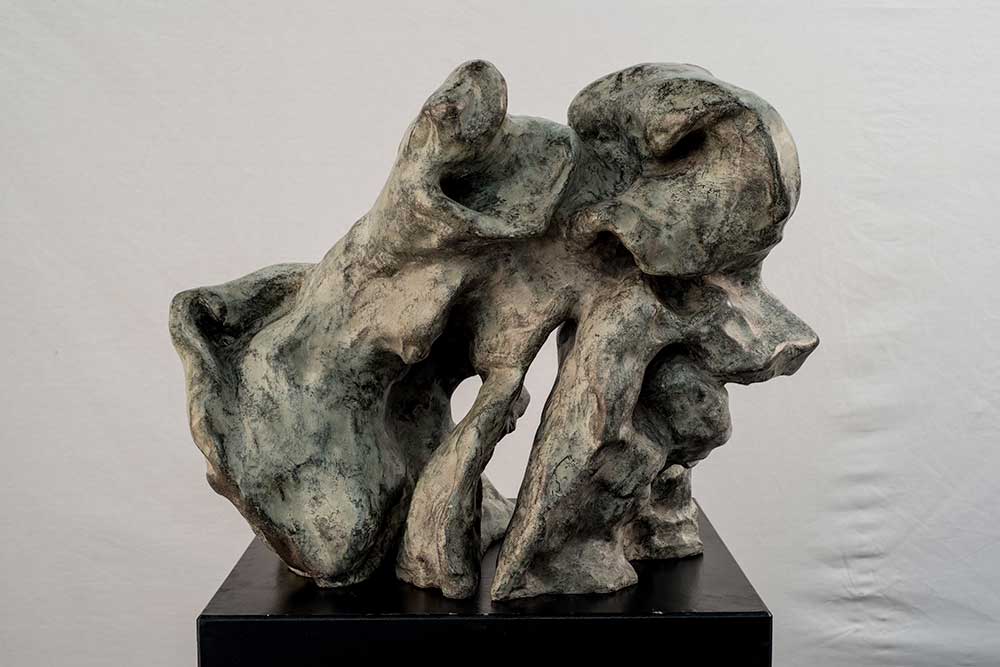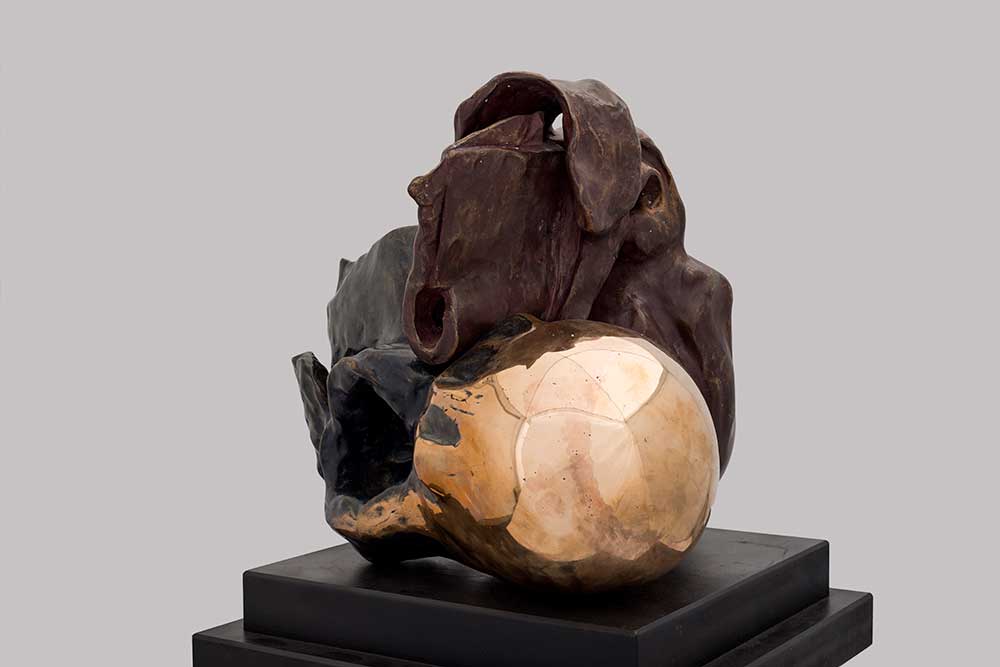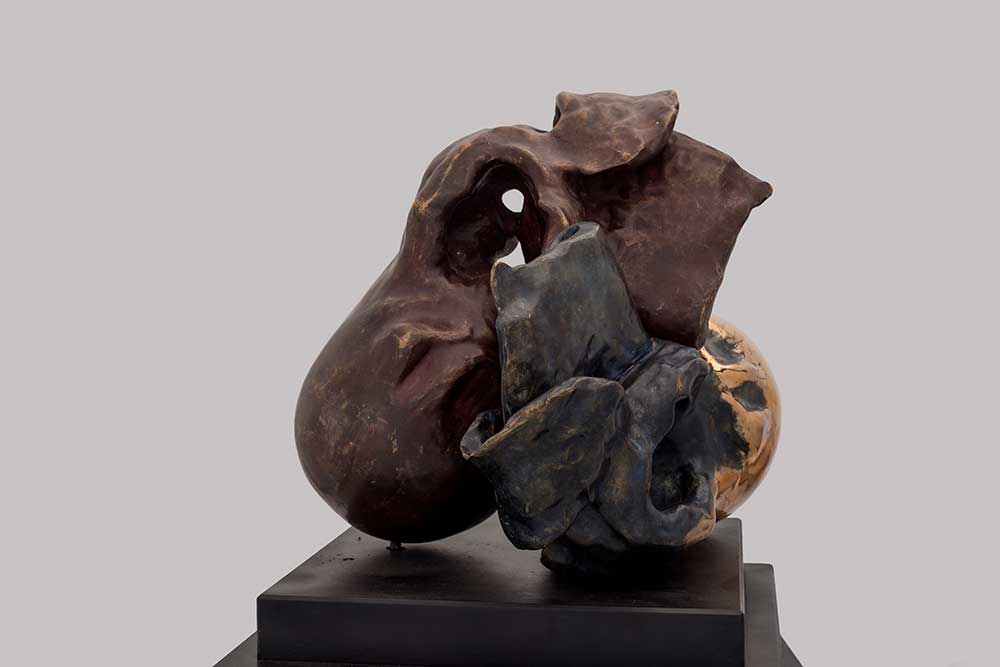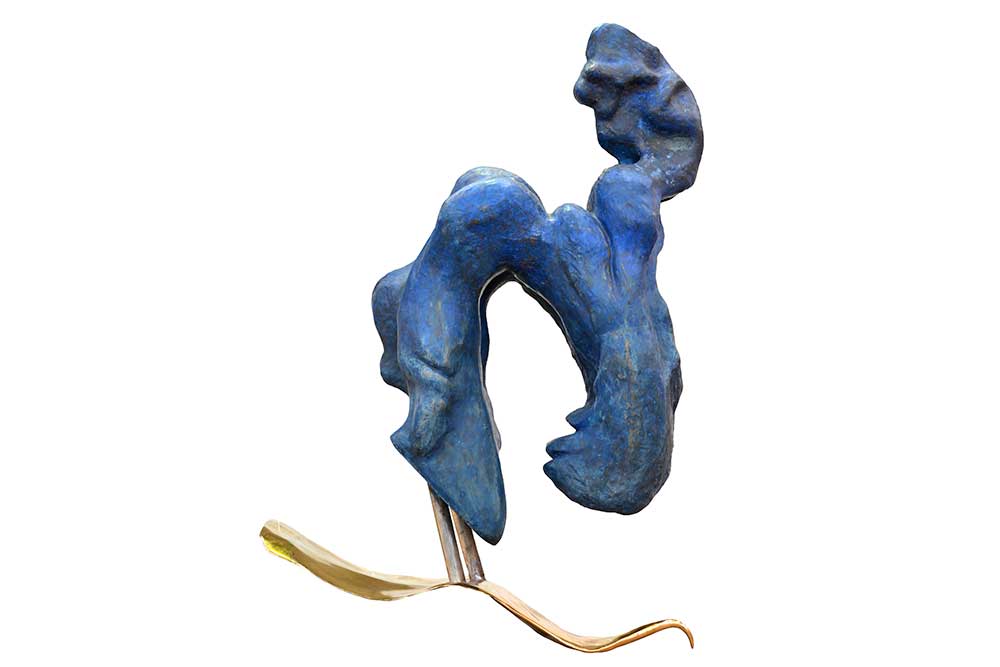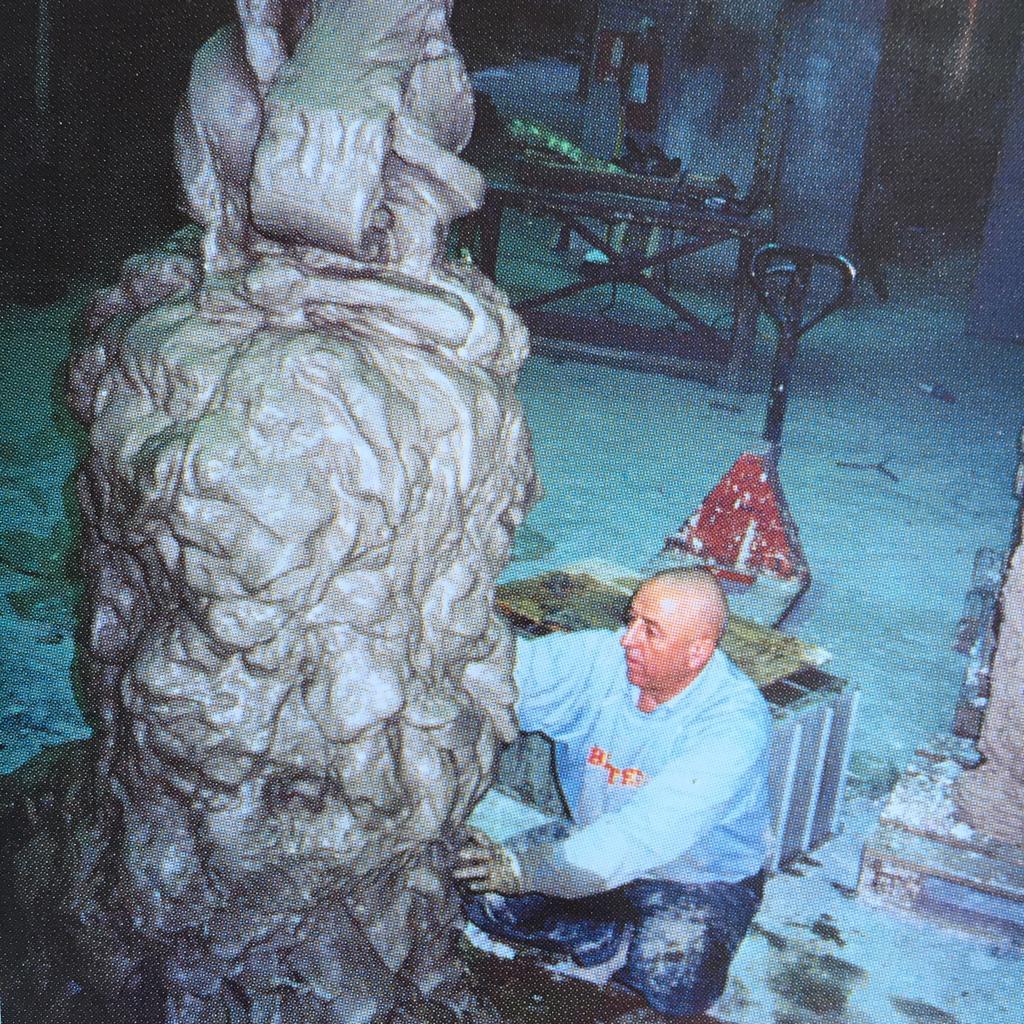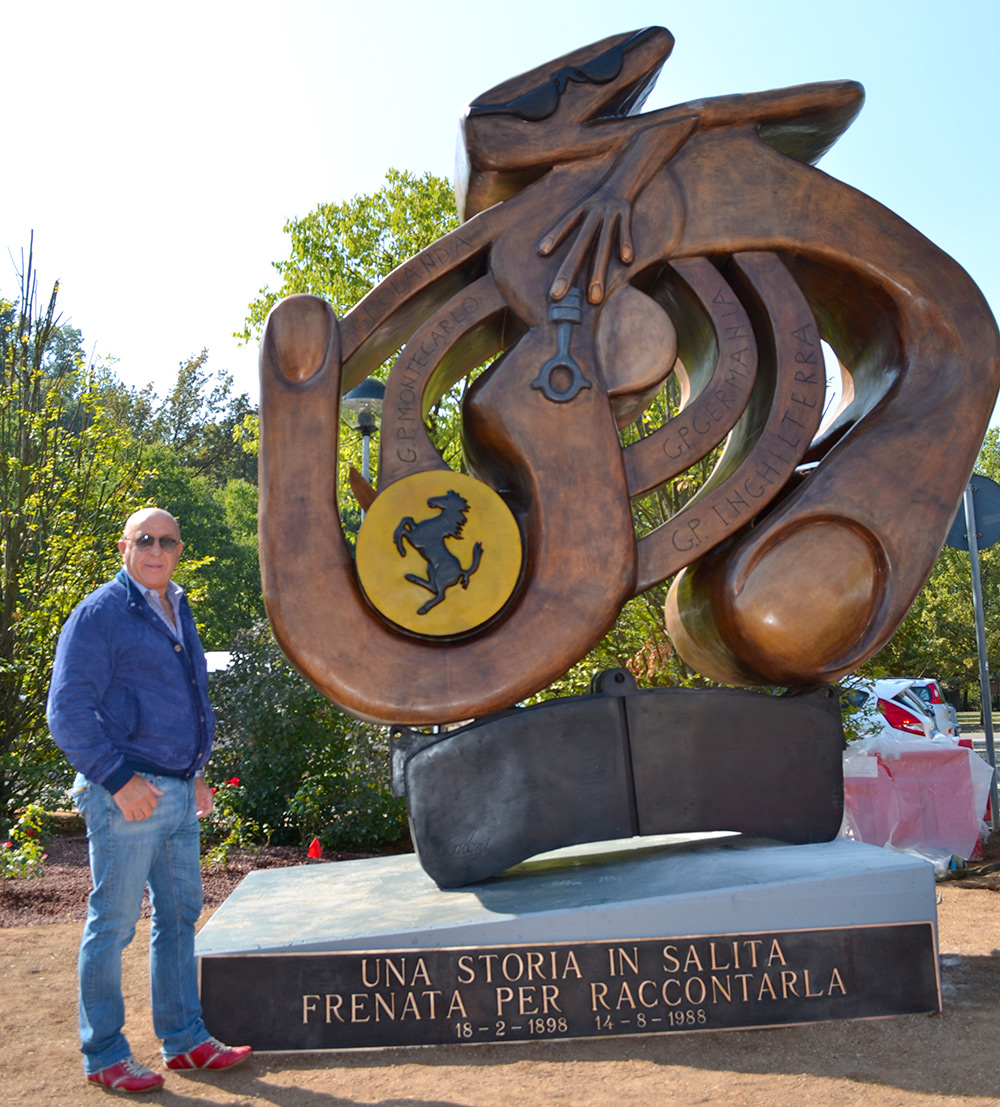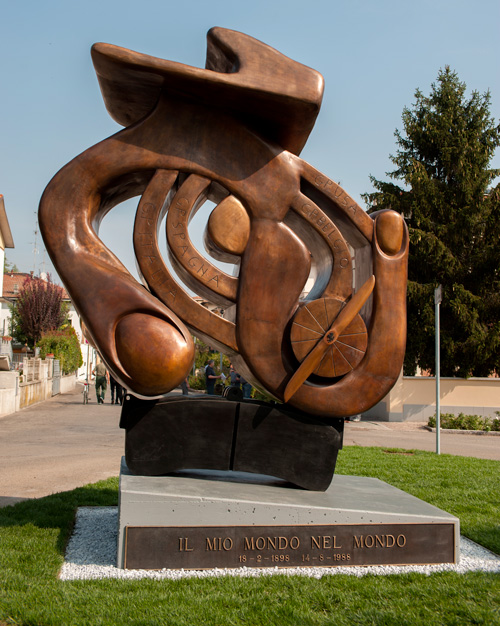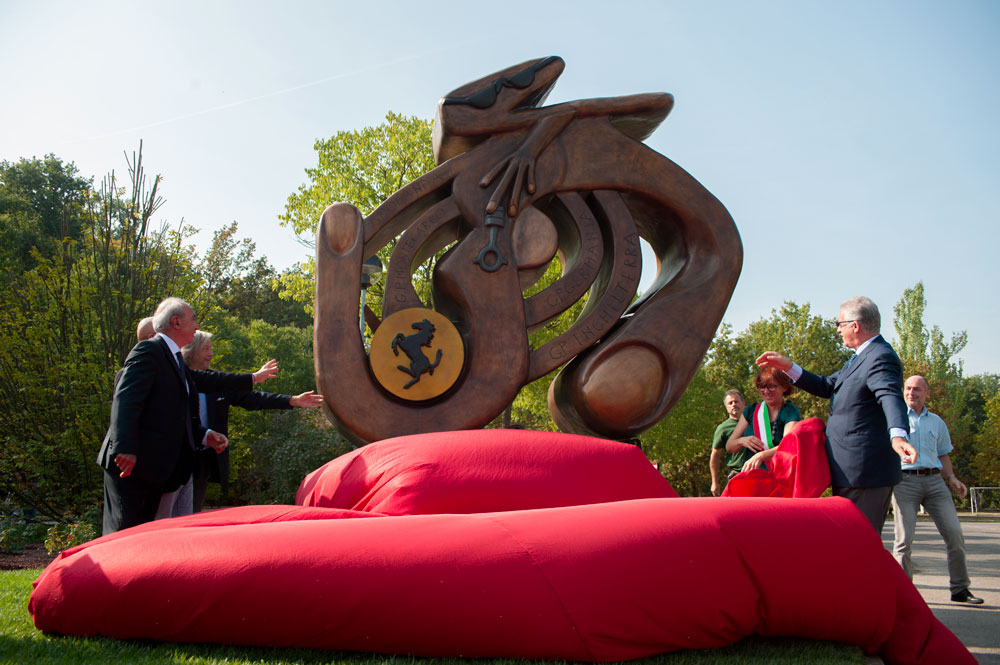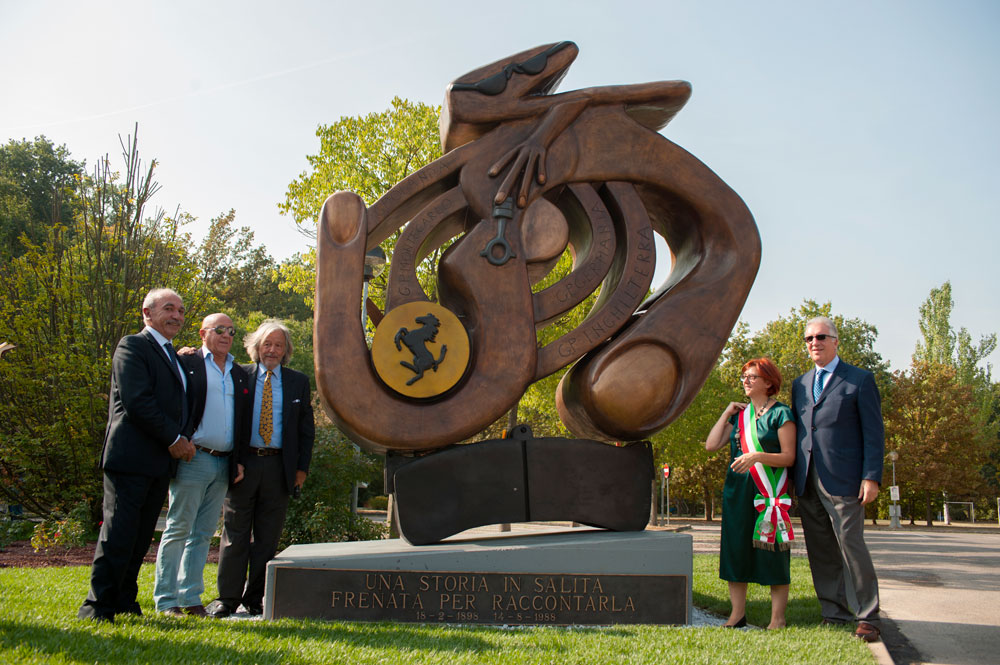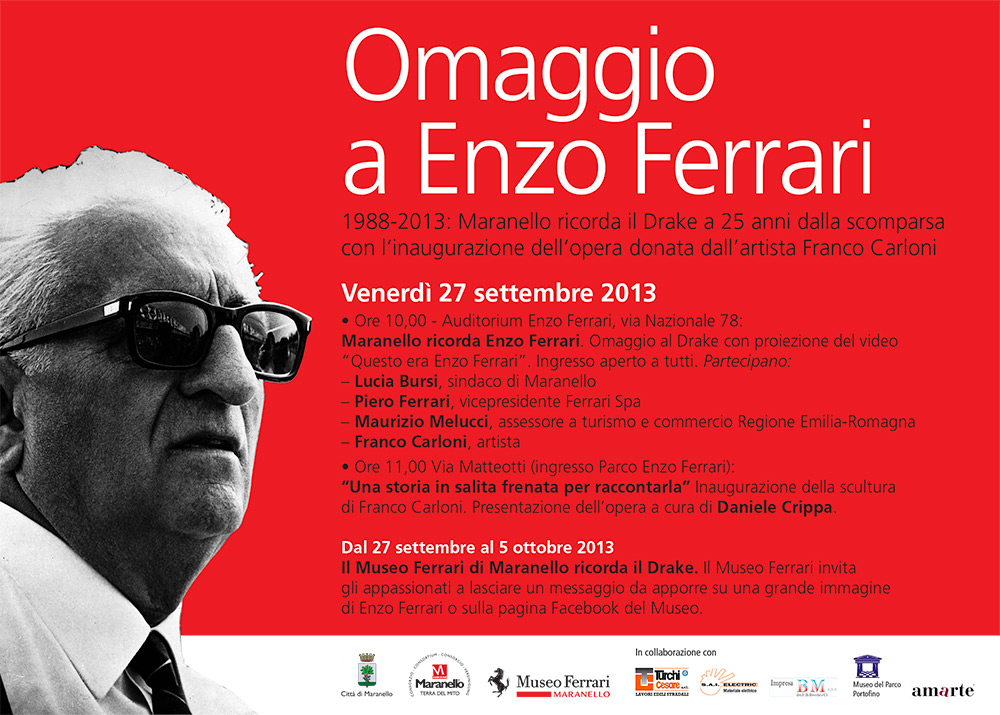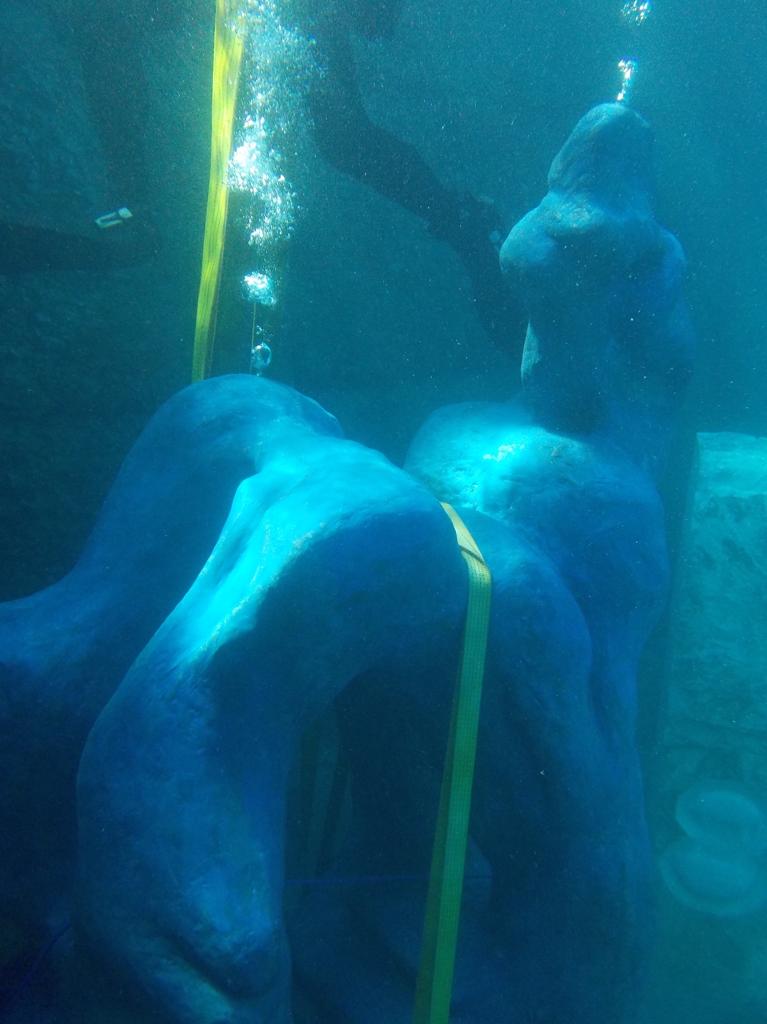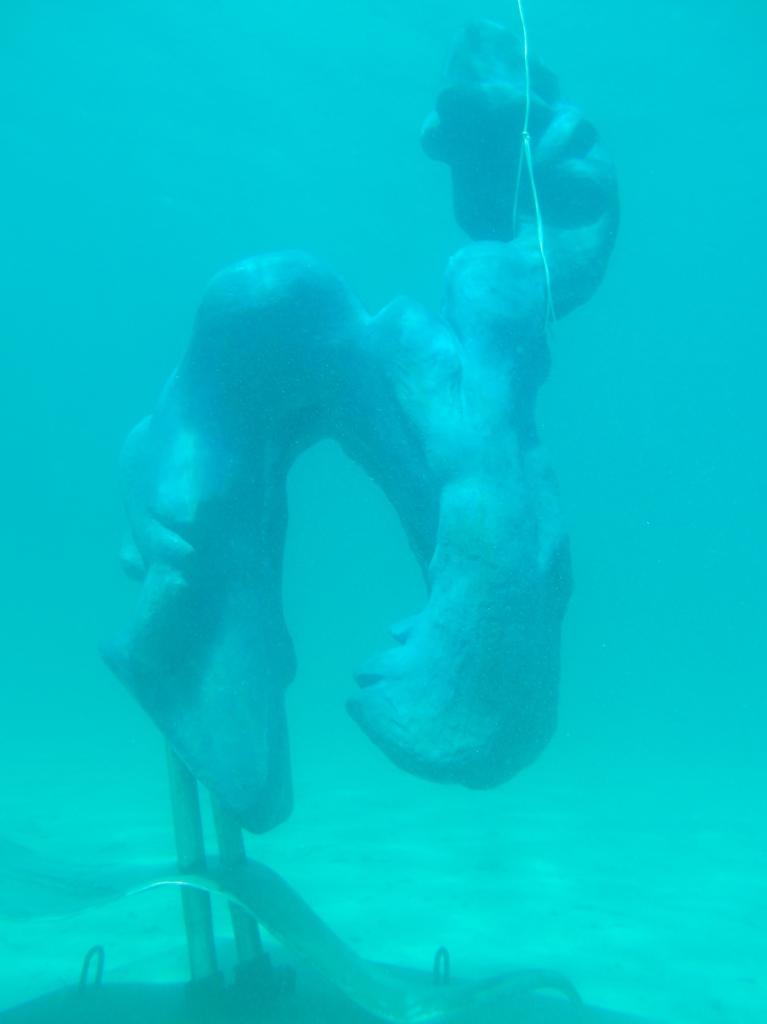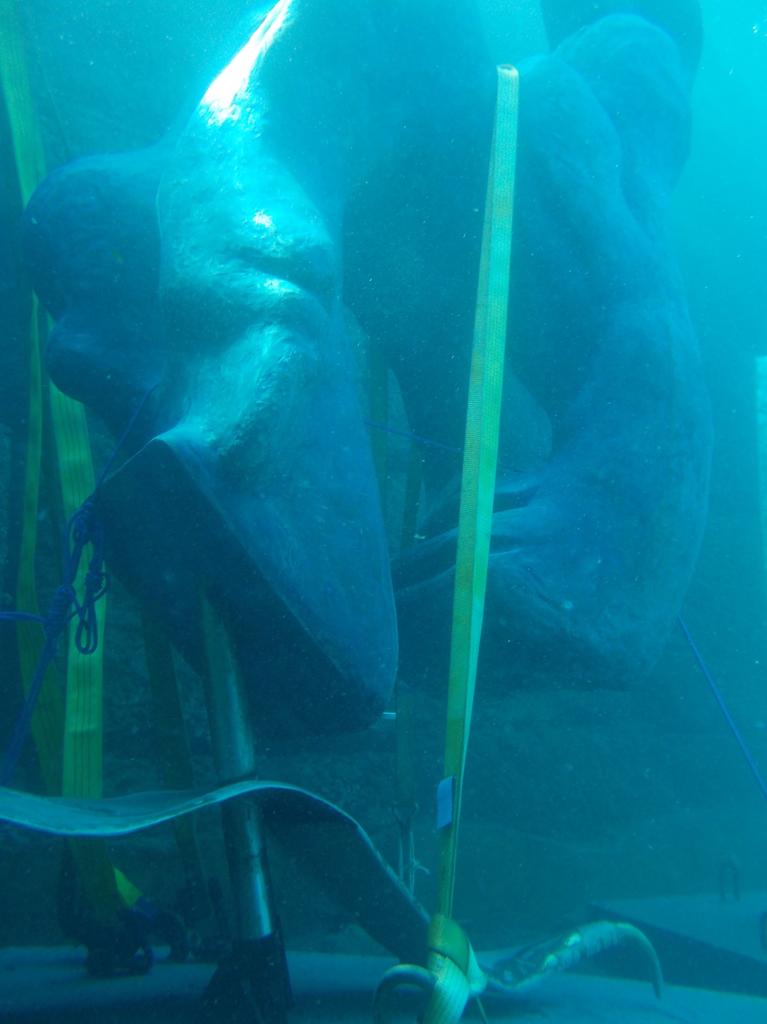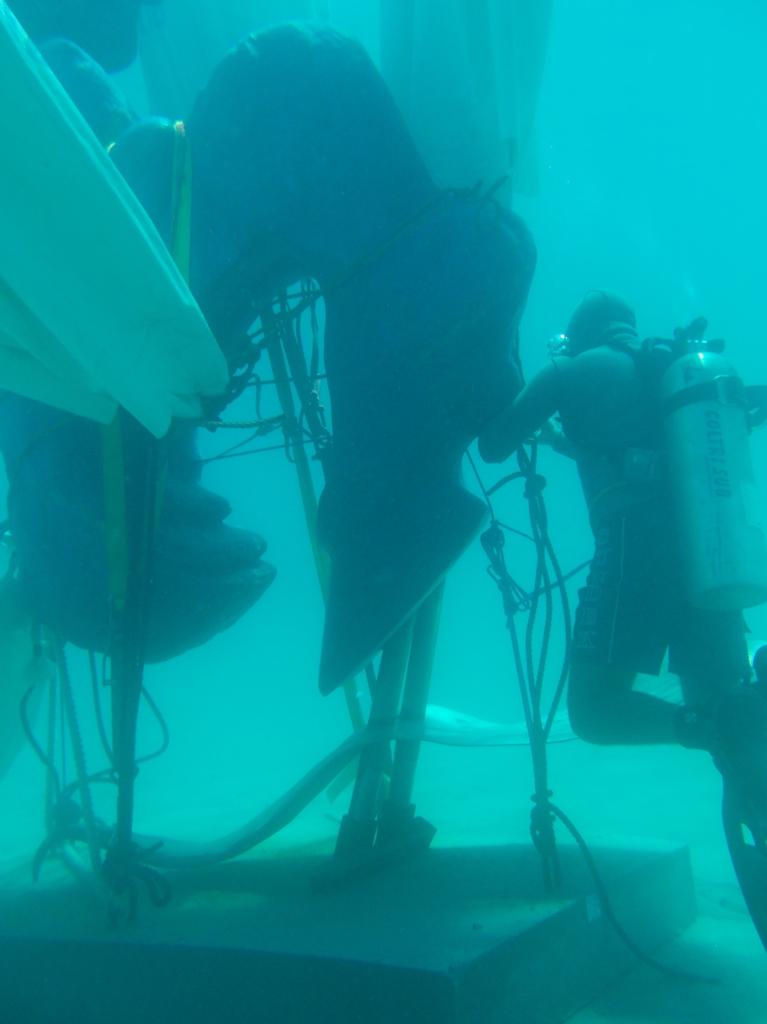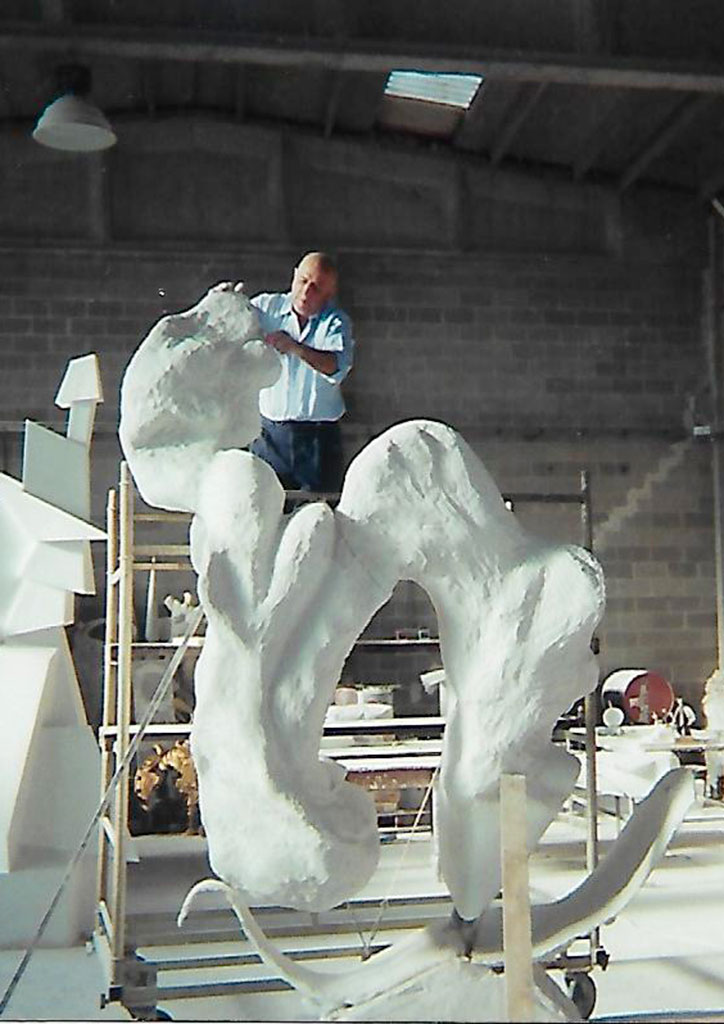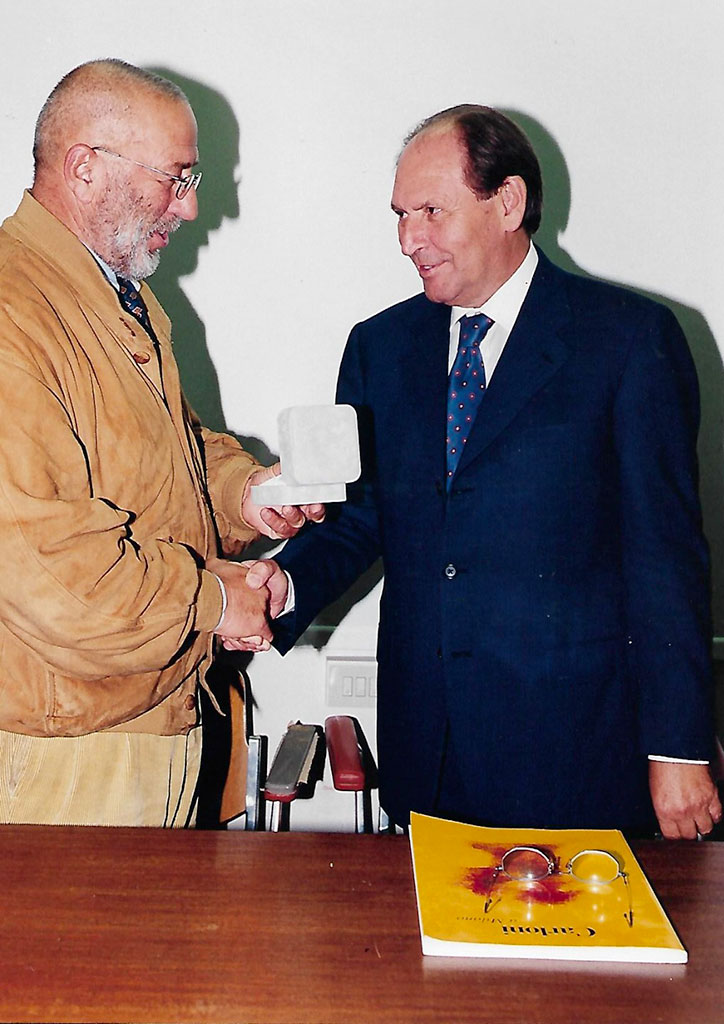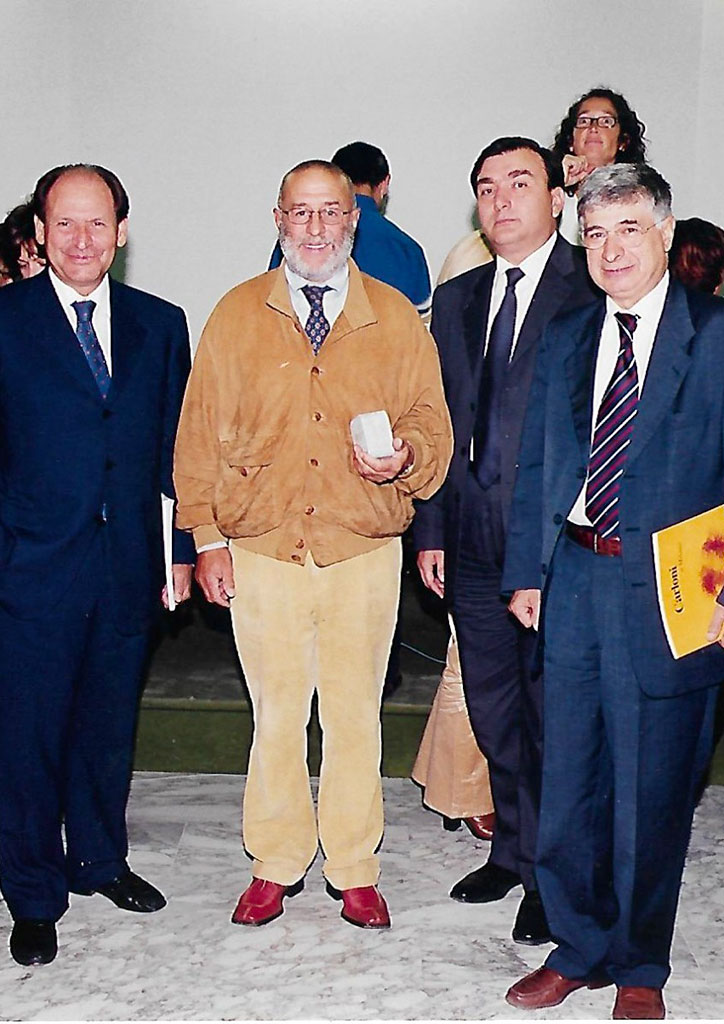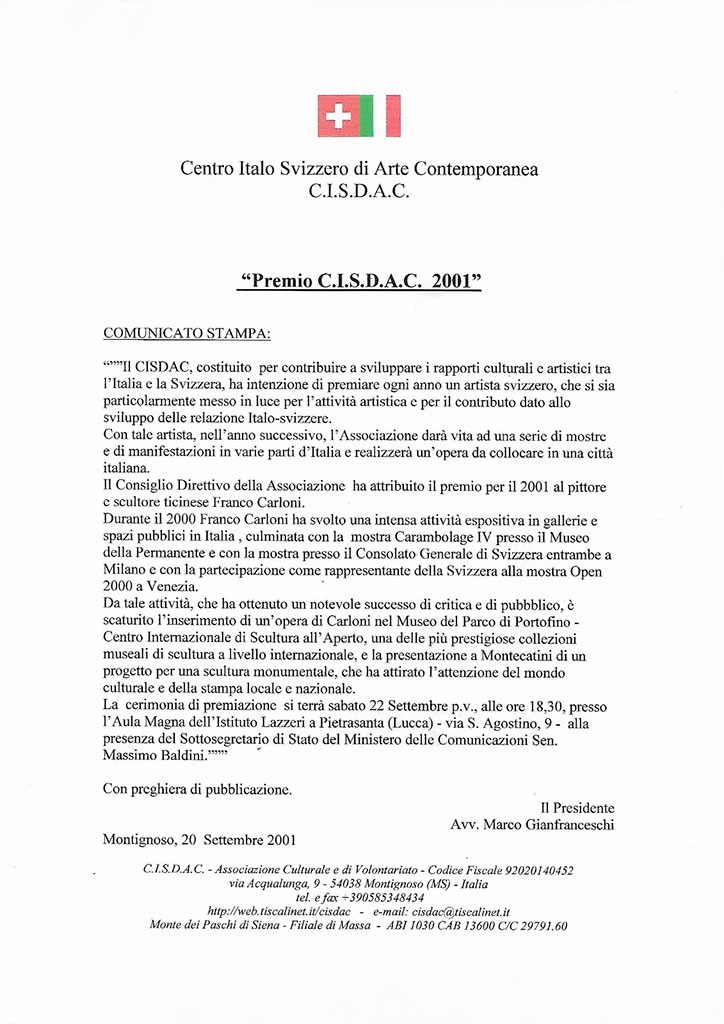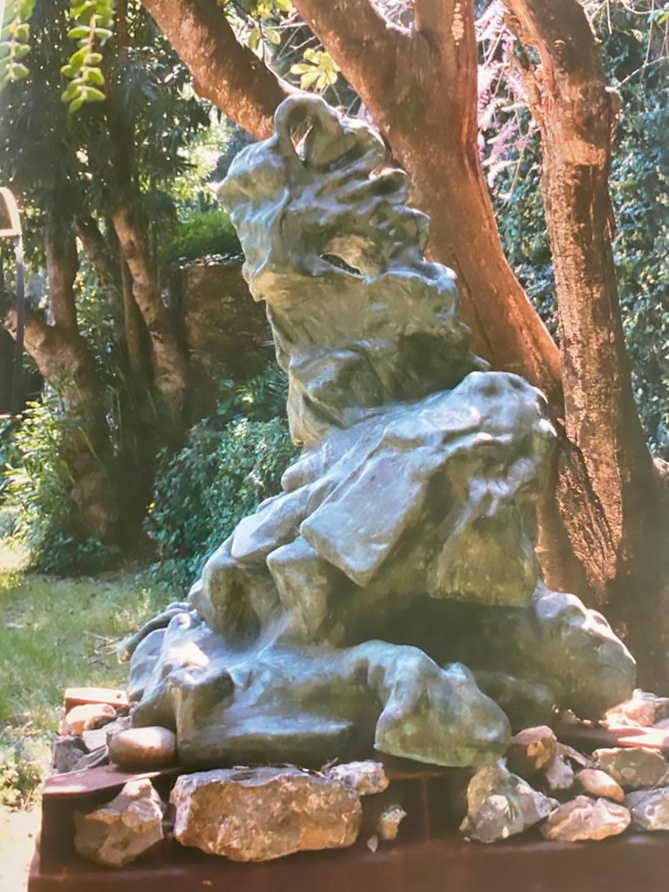The Sculpture
Carloni looks at sculpture as being the place that encloses the cir-cular movement of sight, above all the search for the sinking into and emerging from the magma of the matter.
In touching and modifying the body of earth there is a felicitous erotism which consists in materializing the dream of conjunction, the desire to unite the figures that the artist brings into play without drama, with the impetus which corresponds to the taste of abandon and ecstasy.
There is no conflict in the evident embrace of the bodies but an expressive naturalness which accompanies the anatomical distor-tions, the loosening of the bodies within the plastic nucleus like forms that yield, the one to the other, receiving and giving back energy in the same moment with neither regrets nor strainings.
Every work is created, grows and spreads out by way of the sen-timent of fluidity and openness, developing its own harmonies and discords within an infinite becoming of solicitations that find their most palpable reference in the value of softness. Embraces, torsions and deformations: Carloni’s sculptures establish manifold relations with space, they enter into a relationship with emptiness, they seem to solidify the air which circulates around the forms and in this sense they look to the grand plastic tradition that breaks the boundaries of the pure line.
In order to look at this type of sculpture it is necessary to gene-rate an action of ‘a wooing’ of the form. It is not sufficient to look at a work like “”L’abbraccio della vita”” [The Embrace of Life]: it is necessary to explore it, to assist it by way of the action of the eye which leaps from one point to another.
[Excerpt from Claudio Cerritelli’s review]
In the Atelier
The Sculptures
The Collar Sculptures
Franco Carloni has created a unique assembly system. At first glance, it would appear as a composite body with seemingly abstract shapes, but on a second look, the reality of two distinct bodies becomes apparent: one with an organic shape, the other geometrical, both intriguing due to their internal mobility. Add the bimorphic volume of a bronze sculpture, pregnant with colours and opulent masses, merit of a steel cable connecting two metallic spheres. From this pregnant sculpture emerges, out of thin air and with the help of our imagination and visual memory, certain human figures, truly human in fact, not visible up to that moment. These are the chaos’ speaking shapes. Not speaking, but reciting.
At first glance, the language of the Swiss artist evokes the abstract expressionism known as Informal for sixty years. The very context in which painting and culture broke the chains of the representative servitude and became autonomous bodies that presented themselves and nothing else. In reality, under that glove there was a creative hand; and, higher still, an analytical mind. His bipolar construction is an object paired with an event, which allows for the transformation of an abstract shape in an organized structure, a figurative image anchored in time by an event.
“As with all new things, the most significant challenge is to find a name for it. A convenient approach would be to call the upper structure a “collar” and the mother sculpture, “order of the collar”
It is quite rare to find surprising work of arts, but this time around, finally, I can rejoice. Franco Carloni’s representation is truly extraordinary. My senses are overwhelmed by an avalanche of visual and tactile perceptions as soon as the knight-device mounts the horse-sculpture. Wonderful! Both melting in a reciprocal metamorphosis. The mass of the horse-sculpture just became a human figure: I can see it now! That uncertain line of all visions suspended in the fleeing moment. While the knight-device outlines a fleeing figure, its mere presence sustains a self-renewing energy: I have experienced it first hand. Soon after, I moved the collar to chase other figures, of course…
I will say right away that I felt reanimated. Surprise! Sculptures on top of other sculptures, the first seemingly riding the latter. How uncanny, two bronze spheres connected by a steel cable, dominating the shapeless – almost – body of a sculpture. What are they? A discobolus snare, a bracelet like jewel? An electric arc, a molecular chain, a yoke? A new and unheard of linguistic device? The first certainty is that the beholder is able to intervene in the configuration of the beholden. Carloni has allowed me to become an active spectator, involved in a dialogue with his work.
[Excerpt from Tommaso Trini’s review of 2002]




















My World Within The World
On 27 September 2013, on the occasion of the 25th anniversary of the untimely departure of Enzo Ferrari (Drake), at the entrance of the park dedicated to him by the Municipality of Maranello, was erected a magnificent sculpture, signed by the artist Franco Carloni.
I met Enzo Ferrari in the ‘70s, when La Ferrari, after Lauda’s accident, decided to install my automatic fire safety devices in their single-seaters, to mitigate the risk in situations in which the pilot would become unconscious.
When Enzo Ferrari entered a room, everything stood still. His presence, his gaze, dominated the environment.
Knowing him was a privilege.
From that moment, I felt compelled to project the impressions carved in my mind by the legendary Ferrari, also known as Drake.
With the passing of years and the subsequent advancement of my artistic career, I gradually matured the shapes of this sculpture, created specifically as an homage to his personality. This creative work should be construed as a self-contained special world lodged in our general world, a miniature universe within the universe, hence the title “My world within the world”.
By means of this artistic creation, I intend to tell the story of the “Drake” using the symbols of his most emblematic conquests. No stylized race cars, but a global status of the human spirit: pregnancy.
A plastic expansion, in the centre of the sculpture, reveals the tank from which a great destiny was forged and which, not unlike a woman’s womb, bears all those strifes and victories associated with the growth of his legend.
The airplane propeller represents the entry of the horse in the heart of Ferrari. In 1923, Countess Baracca gave Enzo Ferrari a prancing horse, as a symbol of their son Francesco, the best aviation pilot of that period, a charm amulet and also a material reminder of the ideas of heroism and genius, a totem of destiny. Enzo Ferrari forever tied the prancing horse on a yellow background, the colour of Modena, to the history of Ferrari and the whole world.
The circles in the sculpture are symbols of his creative projects, the numerous grand prix circuits, but also the risks taken and the moments of bliss, his pregnancy, his trials. Around this central creational symbol, both technological and sports related, grows the powerful representation of a hand’s fingers. The very hand that held in an iron grip the very faith of the Scuderia Ferrari, for many decades.
While the internal circle represent the amplified and intertwined creative energies, the external spiral of the hand draws the centripetal movements of emotional and technical energies of power. The hand, with the fifth finger hidden in the heart, gently brushes a piston, a symbol of power and pain, a reminder of the fact that during races, to avoid seeing his cars suffering, Drake often left the circuit.
Dominating the entire plastic ensemble is Drake’s countenance, dark glasses on: speed and dominion over the pole positions.
His body, extended towards the Universe, closed upon itself to protect, with his finger, the world he had created and dominated. He holds the world in the palm of his hand.
In his world, the world will always remain embraced with eternity.”
Franco Carloni
Mumart: The Submerged Museum
MuMart, “MuMart, an acronym for “Marine Art Museum”, is a submerged museum, statues representing themes of the marine world, built on the bottom of the Aranci Gulf, the only one of its kind in Europe. There are no walls, nets are the only element delimitating a space shared by marine plants and animals and works of art, for a unique and unforgettable experience.
Anchored on the bottom, at a depth ranging from four to seven meters, the works of fourteen international contemporary artists: Angi, Boero, Bricalli, Cardillo, Carloni, Chapalain, Ciccobelli, Cogorno,
Kosice, Mustica, Nussbuam, Patterson, Polesello, Sturla. Emerald waters and the magic of the gulf’s flora and fauna create a unique stage environment for the art items.
There are three options to visit the submerged museum: on board the Aranci Gulf Yellow Submarine (that’s right, an experience within an experience), by scuba diving under the supervision of the local Underwater Diving Centre or simply by swimming or snorkelling, wearing a diving mask and swimfins. The museum is located in the outer area of the lagoon formed by the Terza Spiaggia, towards open seas, but close enough that a good swimmer might reach it from the beach itself.
C.I.S.D.A.C. Award 2001
The C.I.S.D.A.C., standing for the Swiss-Italian Centre of Contemporary Art, has rewarded Franco Carloni in 2001 for his artistic endeavours and for his contribution to the advancement of the Swiss-Italian relations. During subsequent years, the association and the artist himself have organized a series of exhibitions and events all over Italy.
Hope of Today
The Hope of Today s a sculpture exhibited in the Park Museum of Portofino – International Centre of Open Air Sculpture.
“Franco Carloni’s work has been revolving for years around a quest, translated in an almost obsessive idea of the human figure, caught in its most endearing expression: the embrace. This tenderness consists of a rich mix of feelings, stories, emotions, illusions and certainties.
The feelings and numerous emotions awaken in all of us by this quest has been the starting point of the artistic quest of the Ticinese Maestro.
Since the first representations, quite shy in their monogamous embrace leaning towards the safety offered by precise events, Carloni’s research has been probing with ever increasing intensity the inner world of all human beings. A world built out of fantasy, hopes, stories, sprouting from the psyche of the individual personality.”
[Excerpt from Daniele Crippa’s review]



